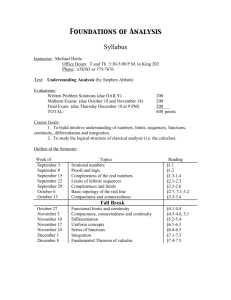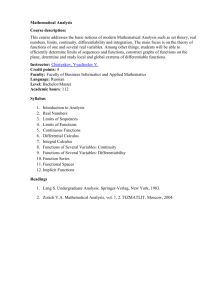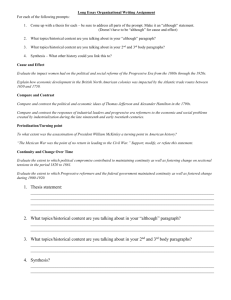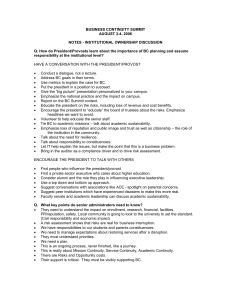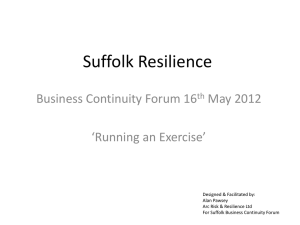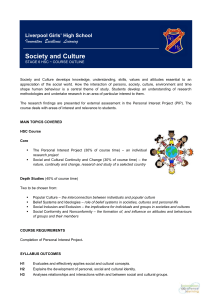Understanding by Design
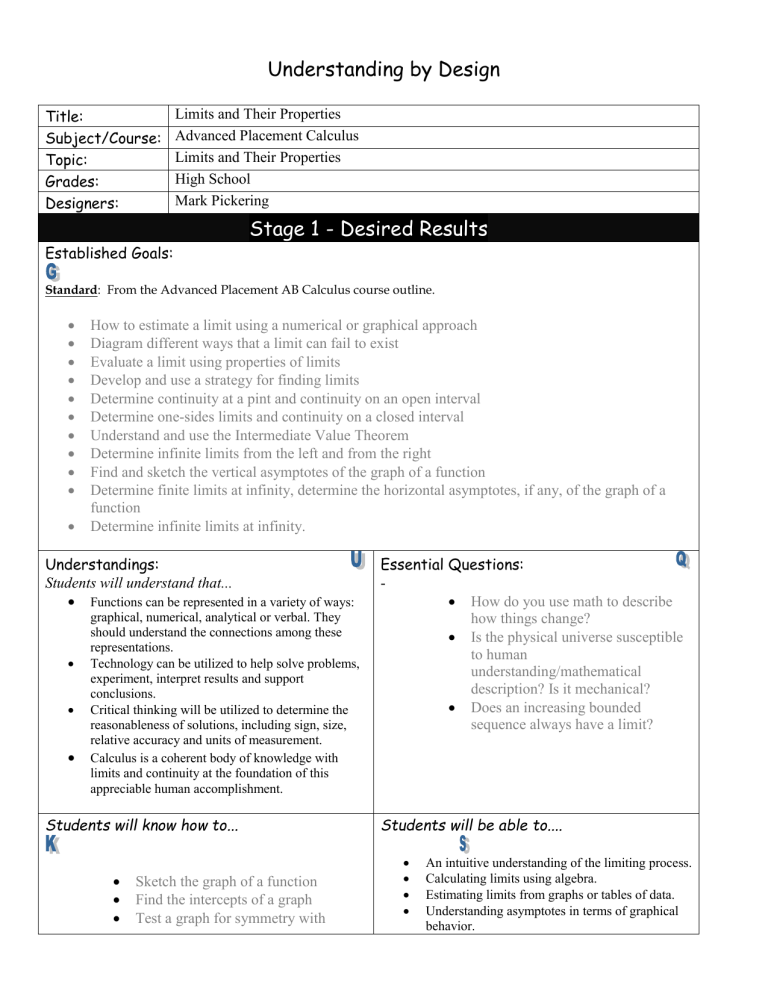
Understanding by Design
Title: Limits and Their Properties
Subject/Course: Advanced Placement Calculus
Topic:
Grades:
Designers:
Limits and Their Properties
High School
Mark Pickering
Stage 1 - Desired Results
Established Goals:
Standard: From the Advanced Placement AB Calculus course outline.
How to estimate a limit using a numerical or graphical approach
Diagram different ways that a limit can fail to exist
Evaluate a limit using properties of limits
Develop and use a strategy for finding limits
Determine continuity at a pint and continuity on an open interval
Determine one-sides limits and continuity on a closed interval
Understand and use the Intermediate Value Theorem
Determine infinite limits from the left and from the right
Find and sketch the vertical asymptotes of the graph of a function
Determine finite limits at infinity, determine the horizontal asymptotes, if any, of the graph of a function
Determine infinite limits at infinity.
Understandings:
Students will understand that...
Functions can be represented in a variety of ways: graphical, numerical, analytical or verbal. They should understand the connections among these representations.
Technology can be utilized to help solve problems, experiment, interpret results and support conclusions.
Critical thinking will be utilized to determine the reasonableness of solutions, including sign, size,
Essential Questions:
-
How do you use math to describe how things change?
Is the physical universe susceptible to human understanding/mathematical description? Is it mechanical?
Does an increasing bounded sequence always have a limit? relative accuracy and units of measurement.
Calculus is a coherent body of knowledge with limits and continuity at the foundation of this appreciable human accomplishment.
Students will know how to...
Students will be able to....
Sketch the graph of a function
Find the intercepts of a graph
Test a graph for symmetry with
An intuitive understanding of the limiting process.
Calculating limits using algebra.
Estimating limits from graphs or tables of data.
Understanding asymptotes in terms of graphical behavior.
respect to an axis and the origin
Find the points of intersection of two graphs
Interpret mathematical models for real-life data
Find the slope of a line passing through two points
Write the equation of a line with a given point and slope
Interpret slope as a ratio or as a rate in a real-life application
Sketch the graph of a linear equation in slope-intercept form
Write equations of lines that are parallel or perpendicular to a given line
Use function notation to represent and evaluate a function
Find the domain and range of a function
Identify different types of transformations of functions
Classify functions and recognize combinations of functions
Describing asymptotic behavior in terms of limits involving infinity.
An intuitive understanding of continuity. (The function values can be made as close as desired by taking sufficiently close values of the domain.)
Understanding continuity in terms of limits.
Geometric understanding of graphs of continuous functions (Intermediate Value Theorem).
Stage 2 – Assessment Evidence
Performance Task: o Planning calculator exercises for different concepts. o Conduct a survey of what students implement in order to solve limit problems. o
Plan a lesson for different levels of students with the different representations of symbolic, numerical, graphical, and verbal.
Other Evidence
Quizzes on limits and continuity.
Calculator exercises for limits and continuity concepts.
Calculus java applets to explore concepts with a study buddy.
Online assessments from various websites that diagnose strengths and weaknesses.
Stage 3 – Learning Plan
Learning Activitity: This activity is cumulative as each topic pertaining to limits and their properties involves many explorations with java applets for calculus and graphing calculator in and out of class. Thus, this activity requires the output of a review game utilizing technology that teacher will integrate into the classroom on a daily basis.
1.
G What is the goal of the task? What is it designed to assess? As a game designer with an educational company, your task is to design a review game utilizing multimedia technology such as
Voicethread, powerpoint, or GoAnimate that will most effectively review limits and continuity.
2.
R What real-world role will the student assume as he/she is performing the task? A game designer with an educational company.
3.
A Who is the audience for the task? Your target audience is the testing department for this
educational company.
4.
S What is the situation that provides the context for the task? You have a two-part challenge: (1) to develop an educational review game that integrates review of limits and continuity, and (2) to clearly communicate the process for solving each facet of their review game utilizing multimedia technology such as Voicethread, powerpoint, or GoAnimate.
5.
P What is the product or performance that is required by the task? You need to develop a written process outlining the steps in sequence for each review problem similar to an answer key.
Additionally, you need to include a graphic format to accompany the written description.
6.
S By what standards will the product or performance be judged? The review game needs to follow the criteria for good design accurately and creatively; identify the key concepts of limits and continuity; include a clear and written description of the process; and provide a review game deliverable in a multimedia format such as Voicethread, powerpoint, or GoAnimate.
